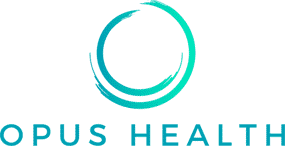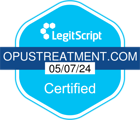In the state of California, you might get your drug-related criminal charges dismissed if you complete a drug treatment program as approved by a court. Proposition 36 is one drug diversion in California, which allows your charges to be dropped after treatment. A court-approved treatment consists of drug education, outpatient or residential treatment, aftercare services, and detoxification or narcotic replacement therapy.
Note that Prop. 36 (also known as Proposition 36) does not refer to alcohol and substance abuse rehabilitation programs that jail and prison facilities offer. Specifically, the Prop. 36 requires that first and second-time drug offenders who are nonviolent to get 12 months of treatment instead of jail time. The treatment period might be extended as the court, and the treatment centers deem necessary.
When Prop. 36 was passed into law in 2000, most participants engaged in outpatient treatment programs, while about 10 percent of participants engaged in residential programs. A few of the participants went to drug detox programs such as methadone clinics.
Besides found in possessions of drugs for the first and second time, Prop 36 also applies to those on parole but found to be in possession of drugs. Instead of sending parolees back to prison when they are found in nonviolent possession of drugs, or they violate a drug-related condition of their parole, they are sent to a drug treatment center.
How Does Proposition 36 Define Nonviolent Drug Possession?
According to Prop 36, nonviolent drug possession in the state of California refers to:
- Being under the influence of or using any drugs listed under the United States Controlled Substances Act
- Possessing or transporting any narcotics under the said act for personal use
Some of the drugs that apply to the nonviolent drug posession law include:
- heroin
- cocaine
- peyote
- gamma-hydroxybutyric acid
- ecstasy
- ketamine
- methamphetamines
- marijuana
- hallucinogenic substances
- some prescription drugs such as codeine and hydrocodone
Who Benefits from Prop 36 in California?
Under Proposition 36, a qualified defendant charged with nonviolent drug possession needs to complete a licensed treatment program as advised by the court. Failure to complete treatment or violating any other term of the probation might see the defendant serving an additional sentence, which might include spending time in jail or prison.
Simply, the law only benefits first and second-time nonviolent drug offenders – the third strike, you are out.
However, some defendants may not benefit. These include:
- Those who refuse to undergo drug treatment
- Anyone incarcerated within the past five years for a violent felony
- Those found in possession of a firearm besides possessing drugs
- Anyone who performs non-drug related crimes while in illegal possession of drugs
- Someone with at least two separate drug-related convictions
- Anyone who the court feels is unamenable to any drug treatment program
Even though Proposition 36 helps keep offenders out of jail, it was noted that only 34 percent of defendants completed treatment. Due to the low rate of treatment completion, in 2006, Arnold Schwarzenegger, the then-senator of California, signed Senate Bill 1137. This sought to make the law foolproof by overturning some provisions. However, Senate Bill 1137 could not override the votes of Californians.
Who Can Go To Rehab Instead Of Jail?
Under Proposition 36, the first- and second-time defendants convicted of nonviolent drug possession will receive up to 12 months of drug abuse treatment to avoid jail time or prison. The twelve months might be extended by two or six more months if need be.
The law also applies to parolees convicted of nonviolent drug possession during parole. Such parolees are not sent back to jail but instead sent to a treatment program. However, anyone in possession of drugs while incarcerated is exempted from Prop 36 eligibility.
What happens after the Prop 36 Treatment program?
After completing a treatment program, you have the right to petition the court to dismiss your conviction. However, for your conviction to be dismissed, the judge needs to agree that you fully went through your assigned treatment and believes that you are free from the chains of abusing any controlled substance. If you comply with all the terms of Prop 36, the judge will dismiss your conviction.
After the dismissal, you are at liberty to state that you have never been arrested or convicted for the offense that sent you to a drug treatment program. This is true unless you are asked to disclose arrests and convictions by:
- Applications for public office
- Peace office application
- Serving on a jury
- An inquiry by a law enforcement officer
- A request for state or local licensing agency that works with California State Lottery
Pros And Cons Of Prop 36
Prop 36 has its pros and cons. It is supported by many people, including enforcement leaders, taxpayer advocates, and civil rights organizations. Equally, the act is opposed by a large section of law enforcement officers.
Pros
Prop 36 in California makes the punishment of first and second-time offenders to fit the crime. Instead of using public resources for nonviolent offenses, Prop 36 only allows violent and repeat offenders to go to jail and not be released early.
Taxpayers save at least $100 million every year when first and second-time offenders are sent to undergo drug treatment instead of sending them to jail. The funds can be used to fight violent crimes, fund schools, and go into other developmental projects. The act continues to keep violent criminals behind bars for up to 25 years.
When nonviolent offenders are sent to rehab instead of jail, there will be more room in prison where violent offenders are held. Most prosecutors, judges, and police officers support Prop. 36 as it allows them to keep violent felons behind bars for life.
Most taxpayers support the Three Strike Reform Act as intimated by Grover Norquist, the President of the Tax Reform. The act can keep violent felons in jail without any impact on taxpayers. Hundreds of millions are saved every year when nonviolent drug offenders stay in drug treatment programs.
The way the law is drafted, violent criminals will not have any benefits whatsoever from the reform. All repeat criminals, third strike offenders, and violent criminal will get life in prison. Nonviolent offenders convicted for more than two times will get double the ordinary sentence. Defendants convicted of violent crimes such as rape, child molestation, or murder will get 25 to life sentence.
Cons
The Three Strikes law was unanimously voted in by Californians in 1994. The law increased prison sentences for repeat felons. Following the passing of the law, the crime rate in California reduced significantly. According to the proponents of the law, the same criminals were cycling in the courts’ system over and over.
Then Prop. 36 came into law and sought to dismiss convictions. According to those who oppose the law, Prop. 36 the law allows criminals so dangerous to get a reduced jail term. Even though there are provisions to ensure that dangerous criminals do not benefit from the act, there are still a few provisions that allow some criminals to take advantage of the law.
Those who oppose the act intimate that Proposition 36 violates conditions of parole, allowing violent criminals to go free when they would have been convicted and sent back to jail. According to them, anyone violating the terms of parole is committing a second crime and needs to go back to jail.
Unlike the Three Strikes law, Proposition 36 gives more leeway for violent criminals to stay in the streets. The Threes Strikes law of 1994 scared felons to stay out of wrongdoing.
The Success of Prop 36
Proposition 36 has had its ups and downs. Most of the drawbacks of the proposition come in the fact that some defendants do not complete treatment. However, besides those who fail to complete court-approved treatment, many people complete treatment and benefit from the law.
Sixty-one percent of California voters approved Prop. 36 in 2000. The law was passed to mitigate the rising incarceration rates and the high costs associated with incarceration. The state of California embarked on expanding the prison system to have the largest prisons in the U.S. Between 1980 and 1999, the number of drug offenders had risen from 2,000 to 45,000. The large number was straining the state coffers, and the jails were overcrowded, making them challenging to manage.
With Prop. 36 in California, the state used $120 million to fund about 36,000 people who were entering community-based treatment under Prop. 36. Nearly half of those entering treatment under Prop. 36 were undergoing treatment for the first time. Twelve years before 2000, the number of felons convicted for drug possession had quadrupled. However, after 2000, the number of people in state prisons dropped by one-third.
For the first seven years after 2000, Prop. 36 graduated at least 84,000 participants and saved the state of California at least $2billion. More people received treatment, and the state expanded treatment capacity by 132 percent.
Ten years down the line, funding for Prop. 36 drug use treatment was withdrawn. This way, treatment for felons remain secondary to punishment, and this has seen the rate of treatment dropout rise. In the financial year 2007-08, funds for Prop. 36 were about $145 million, but in the period 2010-11, funding dropped to zero.
Despite the many hurdles and the reduced completion rate for those sent for rehab instead of jail, prop 36 in California still holds and is critical in keeping the jails less crowded and saving taxpayers money. However, some people still feel that the 1994 Three Strikes Law was doing more in keeping violent felons off the streets than Prop. 36 does.
If you need help finding California addiction treatment after a nonviolent drug charge, call us at Opus Health.











